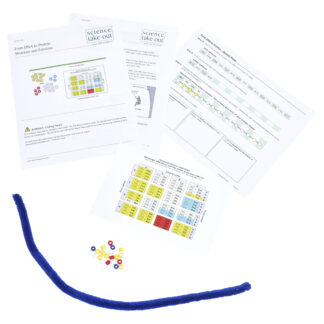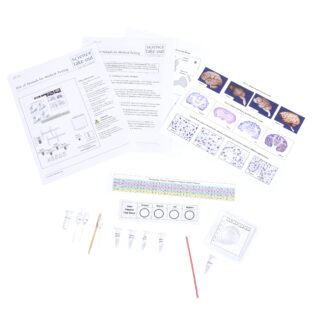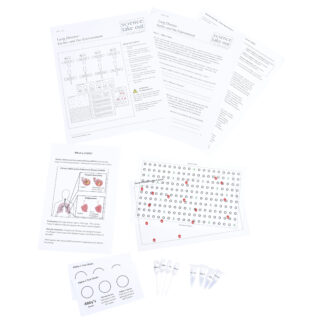Beebops: Genetics and Evolution
$15.95 – $112.95
Create a baby Beebop!
Why are Beebop babies in the same family different? Model how sexual reproduction results in offspring with different characteristics.
Which Beebop babies are most likely to survive and reproduce? Explore how natural selection affects the frequency of characteristics and genes in the Beebop population.
- Use paper chromosomes to show how meiosis produces egg and sperm cells
- Combine the egg and sperm cells to produce a zygote (fertilized egg)
- Decode the genes in the zygote to produce an adorable baby Beebop
- Compare your baby Beebop to other babies in the Beebop Family Album
- Use information on the Beebops’ environment to select which Beebop babies will survive and reproduce
- Predict what will happen to the frequency of traits and genes in the Beebop population
Kit Includes
- Student instructions
- 1 white foam Beebop body
- 4 glue dots
- 1 pom pom
- 2 green chenille stems
- 2 blue chenille stems
- 2 yellow chenille stems
- 1 frilled toothpick
- 2 black eyes
- 2 colored eyes
- 1 black push pin
- 1 white push pin
- 1 clear push pin
- 4 beads
- 6 arrow picks
- 1 paper umbrella
- 2 squares of red tissue paper
- 2 squares of white tissue paper
- Parent Beebop Diagram
- Beebop Family Album
- Beebop Decoding Chart
- Male and female Beebop chromosome sheets
Also Required
- Tape
- Scissors
- Colored pencils
- Markers or crayons
Quantity Discounts
Kits:
- 1 – 9 kits: $15.95 each
- 10 – 24 kits: $15.15 each
- 25+ kits: $14.36 each
Unassembled:
- 1 – 9 packs: $112.95 each
- 10+ packs: $107.30 each
Refills:
- 1 – 9 packs: $80.95 each
- 10+ packs: $76.90 each
Correlation to Next Generation Science Standards (NGSS) Shop by NGSS »
Performance Expectations:
MS-LS3-2. Develop and use a model to describe why asexual reproduction results in offspring with identical genetic information and sexual reproduction results in offspring with genetic variation.
Science & Engineering Practices
Developing and Using Models - Develop and/or use a model to generate data to test ideas about phenomena in natural or designed systems, including those representing inputs and outputs, and those at unobservable scales.
Constructing Explanations - Construct an explanation that includes qualitative or quantitative relationships between variables that describe phenomena.
Disciplinary Core Ideas
LS3.A: Inheritance of Traits - Variations of inherited traits between parent and offspring arise from genetic differences that result from the subset of chromosomes (and therefore genes) inherited.
LS3.B: Variation of Traits - In sexually reproducing organisms, each parent contributes half of the genes acquired (at random) by the offspring. Individuals have two of each chromosome and hence two alleles of each gene, one acquired from each parent. These versions may be identical or may differ from each other.
LS4.B: Natural Selection - Natural selection leads to the predominance of certain traits in a population, and the suppression of others.
Crosscutting Concepts
Cause and Effect - Cause and effect relationships may be used to predict phenomena in natural or designed systems





